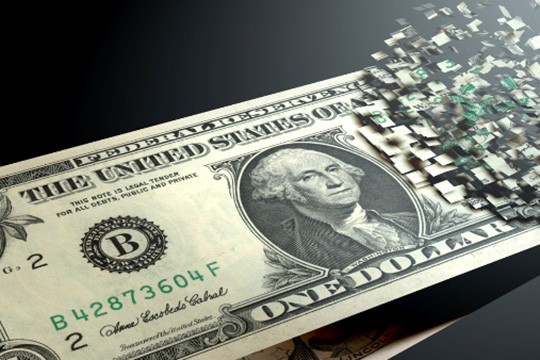FT released a comment under a strange title “Dollar :-(“.
They write:
“We tend to be sceptical of “RIP DOLLAR!!!” chatter, as the US currency enjoys the mother of all network effects. But Stephen Jen’s latest note raises some interesting points. Jen is a very well-known currency analyst. At Morgan Stanley, he famously coined the “dollar smile” theory, which posits that the US currency tends to do well when the economy is humming or heaving.
His latest briefing note argues that the US dollar has “suffered a stunning collapse” as a reserve currency, which has seemingly quickened after Washington’s decision to wield its control over the dollar-based international financial system against Russia.
Jen estimates that if you adjust for price changes the dollar’s share of official global reserve currencies has gone from about 73 per cent in 2001 to around 55 per cent in 2021. Then, last year, it fell to 47 per cent of total global reserves.
FT Alphaville’s emphasis below: The USD is losing its market share as a reserve currency at a much faster rate than is commonly believed. After steady declines in its global market share for the past two decades, in 2022 the dollar lost market share at a pace 10 times as rapidly.
Analysts have failed to detect this big change because they calculate the nominal value of the world’s central banks’ dollar holdings without considering the changes in the price of the dollar. Adjusting for these price changes, the dollar, we calculate, has lost some 11 percent of its market share since 2016 and double that amount since 2008. This erosion in the USD’s reserve currency status has accelerated precipitously since the start of the war in Ukraine.
It seems reasonable to speculate that the main driver of the collapse in USD’s reserve status in 2022 may have reflected a panicked reaction to property rights being jeopardised. What we witnessed in 2022 was sort of a ‘defund-the-global-police’ moment, whereby many reserve managers in the world disagreed with the conduct of both Russia and the US.
The dollar still looks like the proverbial least dirty shirt in the closet. Moreover, as Jen stresses, there are actually two pillars that make the US dollar so mighty: its role as the reserve currency of choice, and its dominant use in global finance and trade. “Investors ought not be confused by these two different concepts,” he argues. While the Global South seems unwilling to continue to hold dollar assets, they do not seem to have the ability to divest from the US dollar as an international currency, particularly for financial transactions.
The key to topple the dollar’s throne as an international currency is predicated on the relative developments and stability in the various financial markets. If the financial markets outside the US could thrive (growing in size and becoming ever more energetic, without being unstable), and if the opposite happens in the US, the dollar could very well meet its demise. This is, however, not an imminent risk, in our opinion, though the trends are heading in that direction.
Dollar still enjoys substantial network advantages as an international currency, mainly because of its huge, liquid, and reasonably well-functioning financial markets. The persistence of these preconditions, however, is not preordained. If the US makes more policy errors and abandons the culture of self-examination, there will likely come a time when much of the rest of the world will actively avoid using the dollar.
Finally, what needs to be appreciated by investors is that, while the Global South is unable to totally avoid using the dollar, much of it has already become unwilling to do so.
… Main point: “If you adjust for price changes the dollar’s share of official global reserve currencies has gone from about 73 per cent in 2001 to around 55 per cent in 2021. Then, last year, it fell to 47 per cent of total global reserves.”
read more in our Telegram-channel https://t.me/The_International_Affairs

 11:39 16.05.2023 •
11:39 16.05.2023 •























